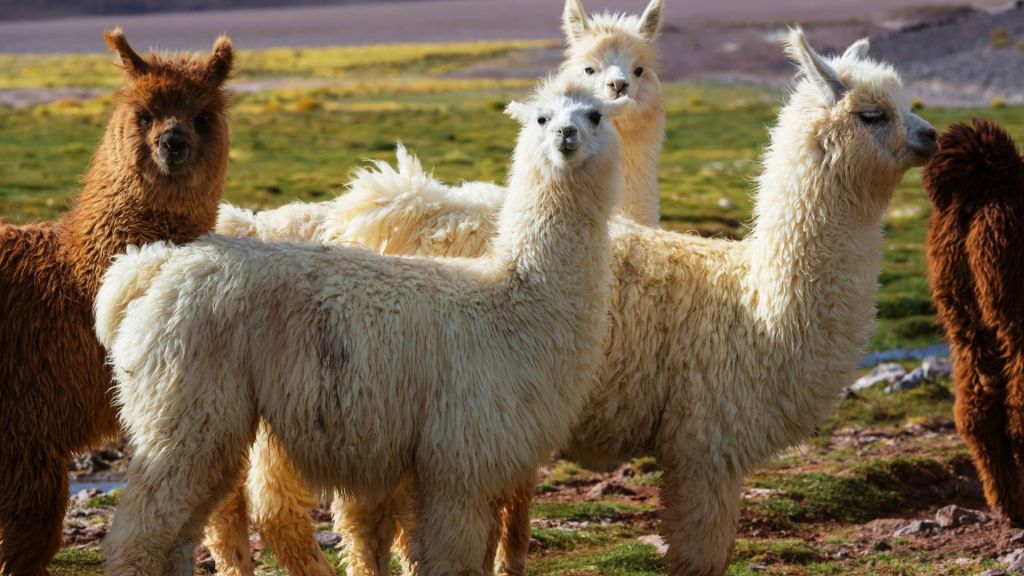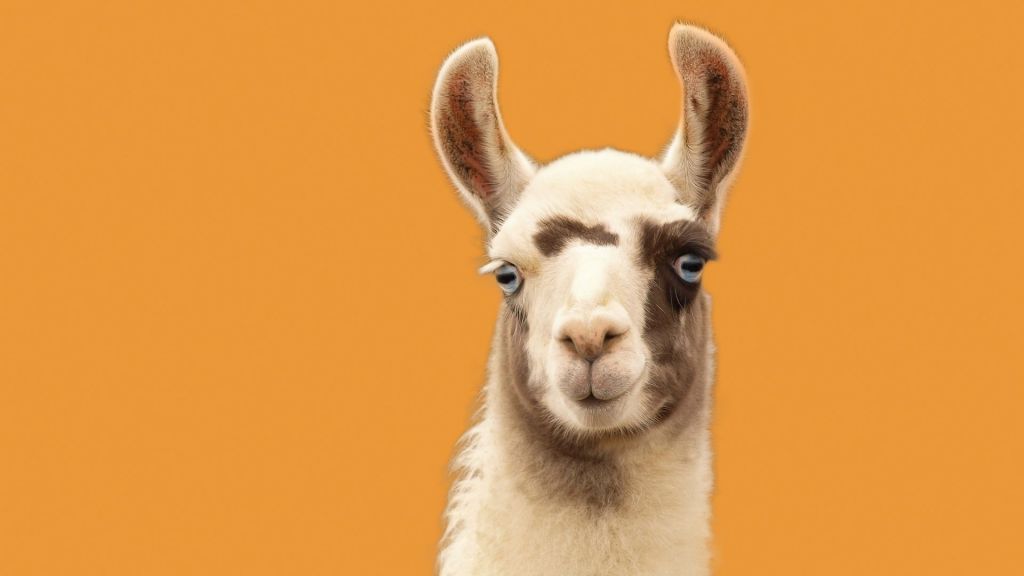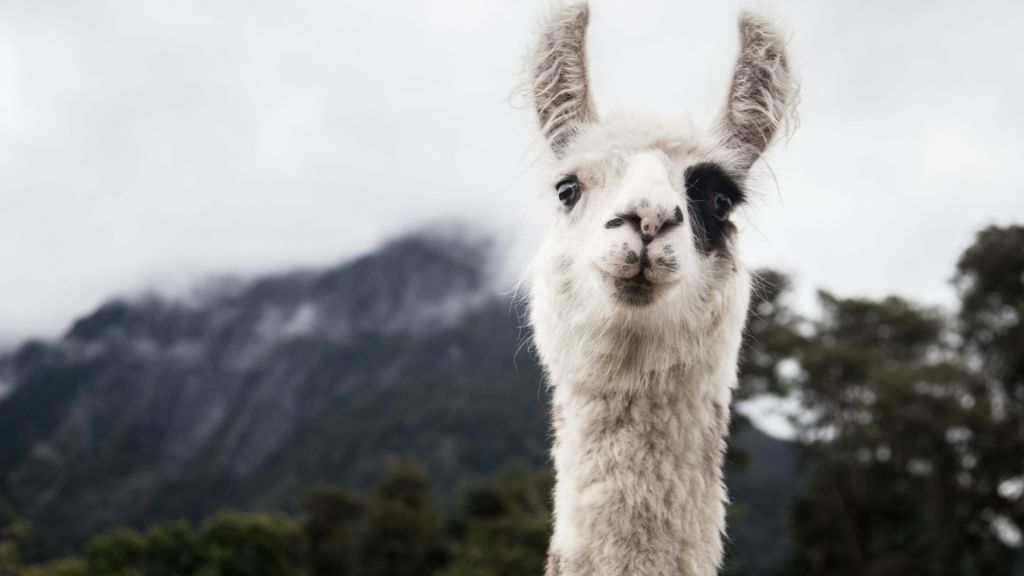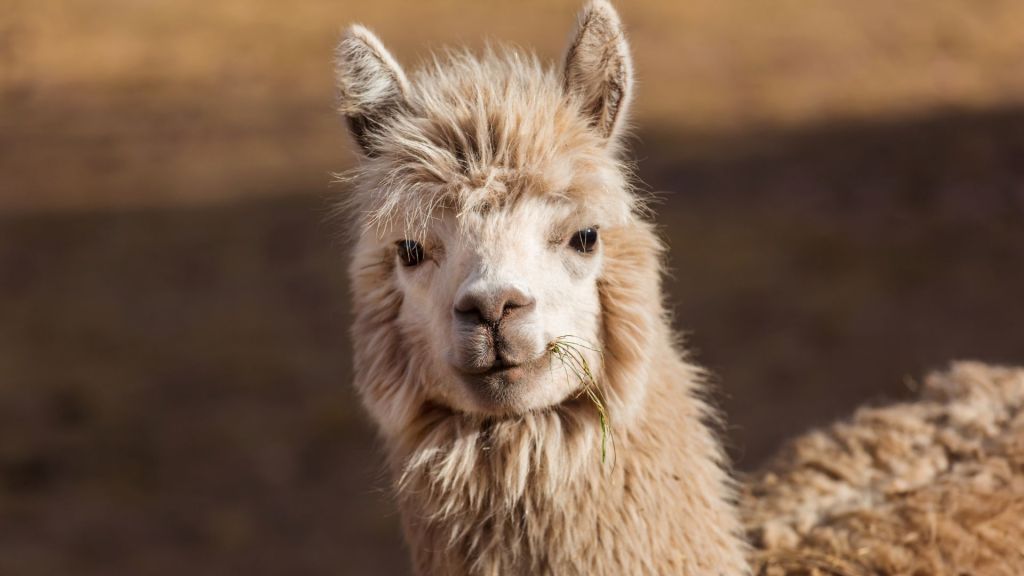Prepare to embark on a journey through the whimsical world of camelids, where adorable, fluffy creatures with endearing expressions and gentle dispositions reign supreme. These captivating animals, natives of the Andes mountains, have captured the hearts of animal enthusiasts worldwide with their irresistible charm and unique personalities.
- Camelid Cousins: Uncovering the Fascinating Family Tree
- Alpacas: The Compact and Cuddly Charmers
- Llamas: The Majestic, Mischievous Giants
- Spot the Difference: A Head-to-Toe Comparison
- Body Talk: Decoding the Fluffy Silhouettes
- Fiber Frenzy: The Battle of the Luxurious Locks
- Personality Parade: Understanding Their Quirky Quirks
- The Mischievous Marvels: Llamas' Lively Traits
- Living with Lamas: Tips for Camelid Companionship
- Diet Dilemmas: Feeding Your Fleecy Buddies
- Showtime! Preparing for Camelid Competitions
- Llama Legends: Stealing the Spotlight at Shows
- The Camelid Conclusion: Making the Right Choice
- The Final Fleece: Finding Your Flawless Fluffball Companion
- FAQ's
Camelid Cousins: Uncovering the Fascinating Family Tree

While alpacas and llamas may appear similar at first glance, they are distinct members of the camelid family, which also includes the guanaco and the vicuña. These relatives trace their lineage back millions of years, having evolved to thrive in the harsh, high-altitude environments of South America’s mountainous regions.
Alpacas: The Compact and Cuddly Charmers
Alpacas, the smaller and more diminutive of the two species, are often described as the embodiment of cuteness. With their round, teddy bear-like bodies and endearingly inquisitive expressions, these gentle creatures have a way of melting even the hardest of hearts. Their soft, hypoallergenic fleece, prized for its warmth and durability, adds to their appeal, making them a favorite among fiber enthusiasts and cuddle aficionados alike.
Llamas: The Majestic, Mischievous Giants
In contrast, llamas are the larger, more imposing cousins, with a regal bearing and a mischievous streak that keeps their owners on their toes. These majestic creatures, often referred to as the “ships of the Andes,” have a long history of serving as loyal pack animals, carrying goods and provisions across the rugged terrain of the Andes mountains. Despite their size, llamas are known for their gentle nature and unwavering loyalty to their human companions.
Spot the Difference: A Head-to-Toe Comparison
Head Game: Sizing Up the Distinctive Crowns
While both alpacas and llamas boast elegant, elongated necks, their heads exhibit distinct differences. Alpacas sport delightfully petite, rounded heads adorned with perky, pom-pom-like ears that seem to radiate joy and curiosity. In contrast, llamas possess larger, more angular heads with towering, banana-shaped ears that give them an air of regal confidence.
Face Off: Deciphering the Delightful Mugs
The facial features of these camelid cousins are equally captivating. Alpacas are renowned for their perpetual goofy grins, with mouths that seem to be frozen in a cheerful, toothy smile. Llamas, on the other hand, possess perfectly pruned pouts, their lips forming a distinct, slightly protruding shape that adds to their overall regal appearance.
Body Talk: Decoding the Fluffy Silhouettes
Alpacas: Compact, Cobby Cuties
Alpacas are the epitome of compact cuteness, with their round, cobby bodies and short, sturdy legs. Their compact stature, coupled with their plush fleece, creates an irresistible urge to scoop them up and snuggle them close.
Llama Frames: Tall, Lanky Loveables
In contrast, llamas are the graceful giants of the camelid world, with their tall, lanky frames and long, slender legs. Their imposing stature and regal bearing command respect, while their gentle nature and affectionate dispositions make them beloved companions.
Fiber Frenzy: The Battle of the Luxurious Locks

Alpaca Fiber: Hypoallergenic Heaven
One of the most coveted aspects of alpacas is their luxurious fleece, renowned for its hypoallergenic properties and exceptional warmth. This fiber is highly prized by knitters, weavers, and textile enthusiasts for its softness, luster, and versatility, making alpacas a valuable asset in the fiber arts community.
Llama Fiber: Durable and Delightful
While not as soft as alpaca fiber, llama fleece boasts its own unique appeal. Known for its durability and resistance to moisture, llama fiber is often used in rugged outdoor gear, providing warmth and protection against the elements. Its natural insulating properties make it a favorite among adventurers and those who appreciate the beauty of functional fibers.
Personality Parade: Understanding Their Quirky Quirks
The Gentle Giants: Alpacas’ Amiable Antics
Alpacas are renowned for their gentle, amiable nature, making them delightful companions for both children and adults alike. Their soft, humming vocalizations, often likened to the melodic buzzing of hummingbirds, have a calming effect on those around them. These cuddly creatures thrive on affection and are known to form strong bonds with their human caregivers, often seeking out snuggles and companionship.
The Hummingbird Hum: Alpacas’ Calming Calls
One of the most endearing traits of alpacas is their unique vocalizations, often described as a soft, humming sound reminiscent of a hummingbird’s gentle buzz. This soothing hum is a means of communication among these gentle creatures, conveying contentment, curiosity, or even a friendly greeting to their human companions.
Cuddle Buddies: Alpacas’ Affectionate Nature
Alpacas are true cuddle buddies, reveling in the warmth and affection of their human caregivers. These sociable animals form strong bonds with their owners, often seeking out physical contact and snuggles. Their soft, fluffy fleece and endearing expressions make them irresistible companions for those seeking a furry friend to lavish with love and attention.
The Mischievous Marvels: Llamas’ Lively Traits
Llama Drama: Their Comical Crias (Baby) Antics
While llamas are known for their regal bearing and stoic demeanour, their adorable crias (baby llamas) are a source of endless amusement and comedic relief. These playful youngsters are known for their antics, from frolicking and prancing around to engaging in friendly spitting matches with their siblings, much to the delight of onlookers.
Sass Masters: Llamas’ Spit-Takes and Stubborn Streaks
Llamas are infamous for their sassy personalities, which can manifest in unexpected ways. Their trademark spit-takes, while generally harmless, are a defense mechanism used to ward off perceived threats or assert their dominance. Additionally, llamas are known for their stubborn streaks, often refusing to cooperate or move when they’ve made up their minds, much to the chagrin of their owners.
Living with Lamas: Tips for Camelid Companionship

The Perfect Paddock: Creating an Oasis for Fuzzy Friends
Alpaca Accommodations: Cozy Quarters for Compact Cuties
Providing the perfect living environment for alpacas is essential for their well-being. These compact cuties thrive in cozy, secure quarters that offer ample space for grazing and socialization. Shelters should be well-ventilated and provide protection from the elements, while also allowing for easy access to fresh water and hay.
Llama Lodgings: Spacious Sanctuaries for Leggy Loveables
Llamas, with their larger stature and active nature, require more spacious accommodations. Their living quarters should provide ample room for roaming and exercise, as well as shelter from inclement weather. Sturdy fencing is a must, as llamas are known for their curiosity and tendency to explore their surroundings.
Diet Dilemmas: Feeding Your Fleecy Buddies
Alpaca Appetite: Hay, Hay, and More Hay!
Alpacas are primarily grazers, with a diet consisting primarily of high-quality hay. Their efficient digestive systems allow them to thrive on a variety of grass and legume hays, such as timothy, orchard grass, and alfalfa. Fresh water should always be readily available, and supplements may be necessary to ensure proper nutrition.
Llama Lunch: Grazing Grazers Extraordinaire
Like their alpaca cousins, llamas are adept grazers, capable of efficiently digesting a variety of grasses and hays. However, their larger size and higher energy requirements necessitate a more substantial diet. In addition to hay, llamas may benefit from supplemental grains or pellets to meet their nutritional needs, especially during periods of increased activity or gestation.
Concerns and Cures
While generally hardy animals, alpacas are susceptible to certain health issues that require vigilant monitoring and care. Common ailments include gastrointestinal problems, such as bloat and impaction, which can be life-threatening if left untreated. Regular herd health checks, proper nutrition, and prompt veterinary attention are crucial for maintaining the well-being of these gentle creatures.
Llama Longevity: Ensuring a Long, Healthy Life
Llamas are known for their impressive longevity, with some individuals living up to 20 years or more with proper care. However, maintaining their health and vitality requires diligent attention to their unique needs. Regular deworming, hoof trimming, and dental care are essential, as well as monitoring for potential issues like heat stress, respiratory problems, and reproductive disorders. Partnering with an experienced camelid veterinarian can help ensure your llama companions enjoy a long, healthy, and fulfilling life.
Showtime! Preparing for Camelid Competitions

Alpaca Elegance: Strutting Their Stuff in the Show Ring
Halter Classes: Flaunting Fleece and Form
For alpaca enthusiasts, halter classes are the ultimate showcase of these elegant creatures’ beauty and conformation. Meticulously groomed and adorned with colourful halters, alpacas strut their stuff in the show ring, allowing judges to evaluate their fleece quality, body structure, and overall presence. These events are a celebration of alpaca breeding excellence and provide a platform for breeders to showcase their finest stock.
Performance Perfection: Obstacle Courses and More
Beyond the halter classes, alpacas also have the opportunity to demonstrate their agility and trainability in performance events. Obstacle courses, pack classes, and public relations tests challenge these intelligent animals to navigate various obstacles and tasks, showcasing their obedience, problem-solving skills, and ability to work alongside their human handlers.
Llama Legends: Stealing the Spotlight at Shows
Costume Catwalk: Dressing Up for Laughs and Applause
One of the most entertaining aspects of llama shows is the costume class, where these regal animals are decked out in whimsical costumes and parade before delighted audiences. From superheroes to historical figures, the creativity on display is both hilarious and awe-inspiring, highlighting the unique bond between llamas and their owners.
Public Relations Pros: Llamas’ Outgoing Personalities
Llamas are natural-born ambassadors, and their outgoing personalities make them exceptional candidates for public relations events. Whether visiting schools, hospitals, or community gatherings, these gentle giants captivate crowds with their calm demeanour and willingness to interact with people of all ages, making them beloved ambassadors for the camelid world.
The Camelid Conclusion: Making the Right Choice
Alpacas or Llamas? Weighing the Pros and Paws
Alpaca Advantages: Low-Maintenance Lovebugs
Alpacas are the epitome of low-maintenance companions, requiring minimal living space and relatively straightforward care. Their gentle nature and affectionate dispositions make them ideal for households with children or those seeking a cuddly, furry friend. Additionally, their hypoallergenic fleece and lucrative fiber production make them a wise investment for fiber enthusiasts and small-scale farmers alike.
Llama Perks: Hardy, Helpful Haulers
While demanding more space and attention than their smaller cousins, llamas offer their own unique advantages. Their impressive size and strength make them excellent pack animals, capable of carrying heavy loads over rugged terrain. Their protective nature also makes them valuable guardians for smaller livestock, deterring potential predators with their formidable presence and occasional spit-takes.
The Final Fleece: Finding Your Flawless Fluffball Companion

Ultimately, the choice between an alpaca or a llama comes down to personal preference, lifestyle, and intended purpose. Whether you seek a cuddly, low-maintenance companion or a hardy, hardworking hauler, these captivating camelids offer a world of joy and wonder to those willing to open their hearts and homes to these remarkable creatures. So, embrace the fluff, revel in their quirky quirks, and prepare to embark on an unforgettable journey with your new fluffy friend.
FAQ’s
What are the key physical differences between llamas and alpacas?
Llamas are generally larger and more robust than alpacas, with a height of about 42 to 46 inches at the shoulder and weighing between 280 to 450 pounds. They have elongated faces and large, curved ears. In contrast, alpacas are smaller, standing around 34 to 36 inches at the shoulder and weighing between 150 to 175 pounds, with shorter, more blunt faces and smaller, straight ears.
Can alpacas and llamas be kept together in the same space?
Yes, alpacas and llamas can coexist peacefully if given enough space and properly introduced. However, due to their size difference and different social behaviours, it’s important to monitor their interactions, especially in feeding areas, to ensure that the smaller alpacas are not bullied or outcompeted for food by the larger llamas.
What are the main uses of alpaca and llama fibres?
Alpaca fiber is highly prized for its softness, hypoallergenic properties, and thermal qualities, making it ideal for clothing and luxury textiles. Llama fibre, while not as soft, is known for its durability and moisture resistance, making it suitable for use in outerwear and other rugged textiles that require resilience to the elements.
How do I choose between buying an alpaca and a llama?
The choice between an alpaca and a llama depends on your needs and lifestyle. If you prefer a smaller, more manageable animal that excels in fibre production, an alpaca might be the better choice. If you need an animal that can carry loads or serve as a guard for other livestock, a llama would be more suitable due to its larger size and natural protective instincts.
What kind of care do llamas and alpacas need?
Both llamas and alpacas require basic care that includes proper shelter, a diet primarily of hay, regular access to clean water, and routine veterinary checks. They both need periodic shearing to manage their fleece, deworming, and hoof trimming. Llamas generally require a bit more space due to their larger size. It’s important to address their social needs as well, as both species are herd animals and thrive in the company of their own kind or other camelids.


